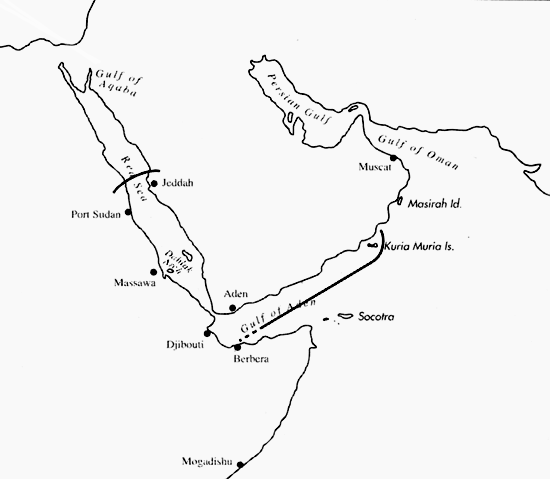Range: S. Red Sea and Gulf of Aden.
Description: Medium-sized and moderately solid. Last whorl conical to ventricosely conical; outline slightly to moderately convex at adapical fourth or third, usually straight below. Aperture somewhat wider at base than near shoulder. Shoulder angulate to subangulate. Spire of low to moderate height, outline concave. Larval shell of 2-2.25 whorls, maximum diameter 0.7-0.8 mm. Teleoconch sutural ramps flat to slightly concave adaxially, with 1 increasing to 3-4 major spiral grooves, containing spiral striae and threads that may produce 5-7 unequal grooves in last 2 whorls. Last whorl with variably wide spiral grooves near base, separating ribs anteriorly and a few ribbons posteriorly.
| Shell Morphometry | ||
|---|---|---|
| L | 35-51 mm | |
| RW | 0.15-0.25 g/mm | |
| RD | 0.58-0.64 | |
| PMD | 0.83-0.89 | |
| RSH | 0.09-0.16 | |
Ground colour white to bluish grey. Entire last whorl with spiral rows of dark reddish or bluish brown dots, dashes, squarish spots and bars that fuse into flames and irregular blotches below shoulder and within adapical as well as abapical third. Larval whorls grey to brown; about 2 adjacent postnuclear sutural ramps brown. Late ramps with radial streaks, flames and blotches, matclung last whorl pattern in colour. Aperture almost white to pale blue deep within, often with a yellow or brownish violet collabral band behind the translucent marginal zone.
Periostracum grey to brown, translucent, smooth.
Habitat and Habits: In 1-25 m.
Discussion: C. jickelii resembles C. angioiorum, C. erythraeensis, C. nigromaculatus, and C. inscriptus; for the distinctions, see the Discussions of those species. The form from Djibouti (Pl. 36, Figs. 22, 23, 25, 26) differs from the lectotype of C. jickelii (Pl. 36, Fig. 21) in its somewhat broader last whorl (RD 0.60-0.64 vs. 0.58), lower spire (RSH 0.09-0.1 3 vs. 0.16), and its angulate rather than subangulate shoulder. C. quadratus (Pl. 36, Figs. 27, 28) refers to a single shell from the Arabian coast of the Red Sea ("Arabia Felix", Forsskål expedition 1761 - 1767) that cannot be separated from C. jickelii by shape, sculpturc, colouration or pattern. It is smaller and might be a subadult. We provisionally assign it to C. jickelii. Although C. quadratus is the older name, there are still doubts whether both names apply to the same species or not. Moreover, the name C. quadratus cannot be applied to C. jickelii because it would be an unused senior synonym of that species. C. jickelii also resembles the shells of an unnamed Conus population sympatric with typical C. jickelii in the Dahlak Archipelago (see Röckel & Moolenbeek, 1992); for the distinctions, see Appendix 2, no. 33 (Pl. 73, Figs. 19-21).

C. jickelii range map
This section contains verbatim reproductions of the accounts of 316 species of Conus from the Indo-Pacific region, from Manual of the Living Conidae, by Röckel, Korn and Kohn (1995). They are reproduced with the kind permission of the present publisher, Conchbooks.
All plates and figures referred to in the text are also in Röckel, Korn & Kohn, 1995. Manual of the Living Conidae Vol. 1: Indo-Pacific Region.
The range maps have been modified so that each species account has it own map, rather than one map that showed the ranges of several species in the original work. This was necessary because each species account is on a separate page on the website and not confined to the order of accounts in the book.